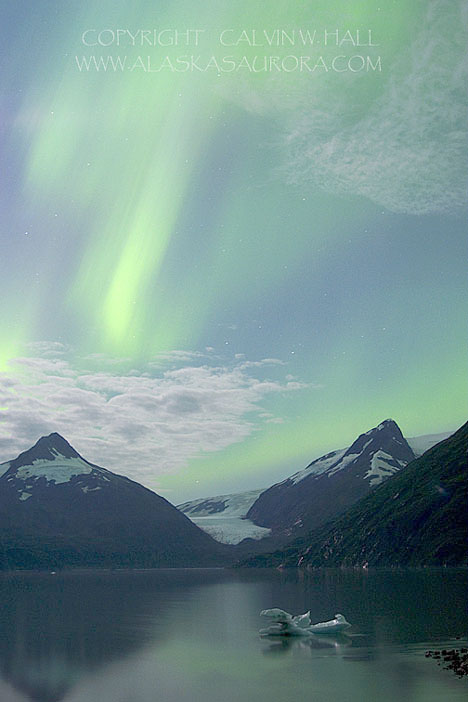
Credit & Copyright: Calvin Hall (Alaska's Aurora)
Explanation: Aurorae can make spectacular sights. Photographed above, flowing green aurorae help the Moon illuminate the serene Portage Lake and the snowy Chugach Mountains near Anchorage, Alaska, USA. Although aurorae might first appear to be moonlit clouds, they only add light to the sky and do not block background stars from view. Called northern lights in the northern hemisphere, aurorae are caused by collisions between charged particles from the magnetosphere and air molecules high in the Earth's atmosphere. If viewed from space, aurorae can be seen to glow in X-ray and ultraviolet light as well. Predictable aurorae likely occur a few days after a powerful magnetic event has been seen on the Sun.